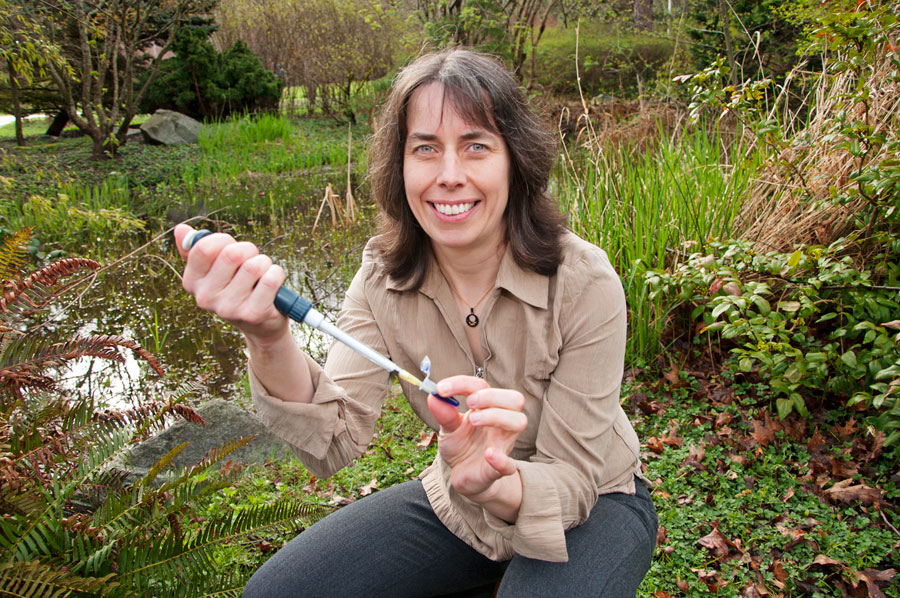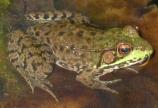Invasive species beware—we have a new way to find you
- Vimala Jeevanandam

What if we could detect invasive species before they wreak havoc? Before they decimate native species, spread disease or cause widespread destruction of habitat? Maybe before anyone sees one? A research group at the University of Victoria, led by UVic molecular biologist Caren Helbing, can now do just this—giving humans a better chance at defending the ecological balance of delicate habitat.
Using DNA that every organism leaves behind, known as environmental DNA, or eDNA, researchers can now take a scoop of water or soil and tell if a species has left their mark. The new technique is described in a paper published in the peer-reviewed journal, PLOS ONE. The study was done in collaboration with environmental consultancy firm Hemmera Envirochem Inc with funding provided in part by the Natural Sciences and Engineering Research Council.
The new technique can be used to detect the presence of some of the world’s most pervasive invasive species, whether it’s the Asian Carp, black rats or the emerald ash borer. It could also be used to detect the presence of invasive species before they take root. For invasive species, early detection is key for successful eradication programs, says Helbing.
On the other side of the equation, companies like Hemmera will be able to use the technique to detect the presence of threatened or endangered species, allowing them to assess the impact of resource development and evaluate remediation efforts.
Traditional methods for identifying the presence of invasive or endangered species involve seeing them directly. These searches can be very destructive to habitat, and many species are difficult to spot even at the best of times.
“The use of eDNA has been around for a few years, but it’s been a Wild West out there in its application,” says Helbing. “What we’ve done is introduce innovations and standards for the detection of eDNA. It allows us to say with confidence whether an invasive species has entered an area, or determine the range of an endangered or threatened species.”
Helbing and her team field-tested the new technique to detect the tailed frog, a red-listed native species, in southeastern BC and invasive bullfrogs in the Victoria area. For years, BC has been trying to rid pond ecosystems of the American bullfrog—a ravenous invader that’s spread everywhere from Arizona to Japan. Notably, they found evidence that bullfrogs are still in Florence Lake in Langford, despite intense eradication efforts there between 2007 and 2011.
“The use of eDNA can help us determine the health of our ecosystems by tracking key species,” says Helbing. “It’s a powerful decision making tool that will give us insights into ecosystem health beyond the species being examined.”

